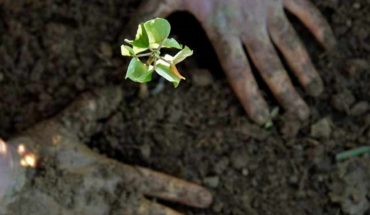Seven years after one of the largest forest fires of native forest occurred in a national reserve, experts from the Department of Forest Sciences of La Frontera University (UFRO) reveal that despite the severity of the fire that affected the China Muerta National Reserve in April 2015, field research observes a hopeful renaissance.
The biologist in natural resources Andrés Fuentes, who leads the team that -since 2016- works to evaluate the impacts of the fire with a view to restoring and analyzing the behavior of this millenary forest after the accident that occurred in the commune of Lonquimay, says that the research carried out in the field, in the laboratory and through modeling during these years, shows that araucaria is a species with good post-fire resilience.
In fact, he explains, several individuals, especially the youngest, have been able to generate new outbreaks after the fire because they did not die completely, as happened with the affected adult specimens and that were also the largest.
In addition, the year immediately after the fire there was a high production of pine nuts by the araucarias that did not have such great damage. “It was probably a reproductive response to the same stress of fire,” he says. Today they are well-established seedlings that are already about 20 to 25 centimeters tall on average.
But this is just the beginning. Fuentes, PhD in Ecology and Evolutionary Biology from Iowa State University (USA), explains that the life cycle of araucaria is very slow.
“They grow at fairly low rates in the annual periods. For a forest to recover naturally we need at least 150 to 200 years,” he says.
In the best case, some araucarias can begin to produce seeds between 20-40 years, that is, they begin to be reproductive, but it is normal that it takes one to two centuries for the forest to develop more completely. “Hence the araucaria can live for more than a thousand years, as long as they do not face a new fire,” he adds.
“In the China Muerta National Reserve we are seeing a natural recovery of the araucarias. That is good because it will ensure a gradual repopulation that can be complemented with restoration and planting activities,” he says.
In fact, precisely one of the main tasks of the group of researchers from the University of La Frontera has been to work on the production of araucaria plants and their planting in the field using seeds collected from the same reserve.
To date, more than 300 araucarias have been planted in areas affected by high severity of fire, which is where there are lower densities and to enhance the restoration of these sites.
Other species
Another species of the reserve that worries researchers is the lenga. In areas where the fire was very severe and the fire charred everything, the lenga is not recovering, as it is not producing seeds nor are they arriving from other places.
That is why the group of scientists is also doing an intensive collection of them in the area that was not affected by the fire to produce plants in the laboratory that they hope to take to the field during the coming years.
The lenga is a species of deciduous. In autumn-winter it throws away its leaves and in doing so contributes a good amount of organic matter and nutrients such as nitrogen, which are reincorporated into the soil.
“When the forest was burned we did studies of soil nutrients and nitrogen levels, which is very important for plant development, practically fell more than 50 percent, because when exposed to the high temperature of a forest fire you lose a lot of nitrogen, it volatizes. Therefore, the soil has fewer nutritional resources and costs more for the plants to recover,” he says.
Fuentes estimates that the recovery of the forest will continue at its natural pace, as long as there are no other major disturbances.
This year there was a new accident in the reserve. Approximately 700 hectares were burned, but those affected were not araucarias, but mainly raulí and coihue forests that can be recovered more easily: “Fortunately this fire did not overlap with what was burned previously.”
The 2015 fire affected some 2,024 hectares of China Muerta, equivalent to about 23 percent of its surface. Half of the stricken area was covered by araucaria forest. The reserve is covered in more than 80 percent by forests of this native species.
In fact, China Muerta has one of the populations of pure araucaria, that is, without being mixed with another tree, larger within the distribution of the species in Chile. The rest is composed of lengas, coihues and raulíes.
“As the main state university of regions, we seek with this project to continue promoting the contribution that from science and research we can deliver to our society. In this case, to achieve a better knowledge and conservation of the native forest, a heritage of all Chileans and humanity, which we must take care of for this and all future generations, “said the Vice Rector for Research and Postgraduate of UFRO, Rodrigo Navia.
Beyond the current monitoring of the reserve, the UFRO biologist highlights that the underlying idea of this project is that China Muerta becomes a long-term biological station to monitor the different variables that affect the recovery of the ecosystem as a whole and from there extrapolate its applications to other forests.
Follow us on





